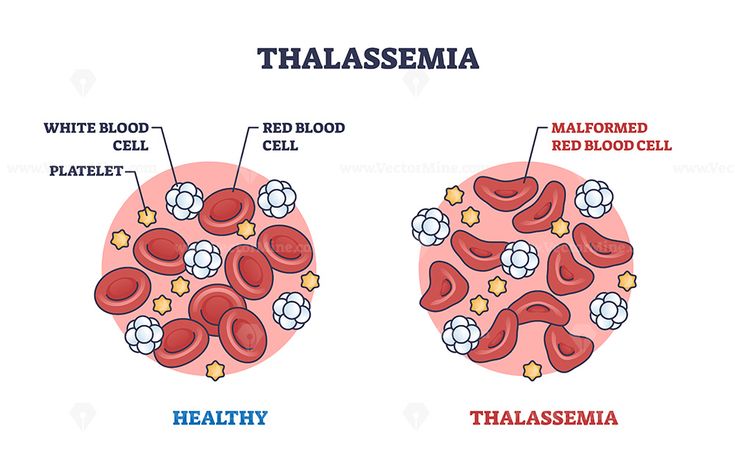
Inborn errors of metabolism are rare genetic disorders that affect the body’s ability to convert food into energy and remove waste products. These conditions arise from defects in specific proteins, known as enzymes, which are crucial for metabolic processes. When these enzymes do not function properly due to genetic mutations, the body cannot adequately break down certain substances from food. This can lead to an accumulation of toxic compounds in the body, resulting in a variety of symptoms that can affect multiple organ systems.
Clinical Presentation of Inborn Errors of Metabolism
The clinical presentation of IEM can vary widely depending on the specific disorder, but there are common signs and symptoms that may indicate the presence of these conditions.
1. Initial Signs and Symptoms
The initial clinical presentation often includes:
- Cognitive Impairment: Many patients exhibit some degree of cognitive dysfunction, which may manifest as developmental delays or learning difficulties.
- Seizures: Seizures are a frequent symptom associated with various types of IEM, indicating potential neurological involvement.
- Growth Retardation: Children with IEM may experience stunted growth due to metabolic imbalances affecting their overall development.
- Neuropsychomotor Developmental Delay: Delays in reaching developmental milestones can be observed, impacting motor skills and social interactions.
- Hepatomegaly: Enlargement of the liver is another common finding, particularly in certain metabolic disorders.
2. Laboratory Abnormalities
Laboratory tests often reveal specific abnormalities that support the diagnosis of IEM:
- Hyperammonemia: Elevated levels of ammonia in the blood can indicate urea cycle disorders, where the body cannot effectively remove ammonia produced during protein metabolism.
- Metabolic Acidosis: This condition arises when there is an accumulation of acids in the body or a loss of bicarbonate, which can occur in several metabolic disorders.
3. Specific Types of Inborn Errors
Different types of IEM present with unique combinations of symptoms:
- Aminoacidopathies: Disorders such as phenylketonuria (PKU) lead to an accumulation of amino acids due to enzyme deficiencies.
- Organic Acidemias: Conditions like propionic acidemia result in the buildup of organic acids, leading to severe metabolic disturbances.
- Urea Cycle Disorders: These involve problems with removing ammonia from the bloodstream, leading to neurological symptoms and potential brain damage if untreated.
- Lysosomal Storage Diseases: These diseases cause harmful substances to accumulate within lysosomes due to enzyme deficiencies, resulting in various systemic effects.
4. Importance of Early Diagnosis
Early recognition and diagnosis are crucial for managing IEM effectively. The challenges faced include limited access to specialized laboratory tests and a shortage of healthcare professionals knowledgeable about these conditions. Prompt diagnosis can significantly impact treatment outcomes and help prevent long-term sequelae associated with untreated metabolic disorders.
In summary, the clinical presentation of inborn errors of metabolism typically involves cognitive impairment, seizures, growth retardation, neuropsychomotor developmental delays, hepatomegaly, hyperammonemia, and metabolic acidosis among other symptoms. Understanding these presentations is vital for early detection and management.
Criteria for Newborn Screening and Limitations
Introduction to Newborn Screening
Newborn screening (NBS) is a public health program aimed at the early identification of certain genetic, endocrine, and metabolic disorders in newborns. The primary goal is to detect conditions that can lead to severe health problems if not treated promptly. Among these conditions are inborn errors of metabolism (IEM), which are genetic disorders that disrupt normal metabolism due to enzyme deficiencies.
Criteria for Newborn Screening
- Prevalence: The condition should be relatively common within the population being screened. For effective screening programs, the incidence of the disorder should justify the costs and efforts involved in screening.
- Severity: The condition must have significant morbidity or mortality if left untreated. This includes potential long-term disabilities or life-threatening complications.
- Availability of Effective Treatment: There should be an established treatment protocol that can significantly improve outcomes if initiated early. For many IEMs, early dietary interventions or enzyme replacement therapies can prevent serious health issues.
- Test Reliability: The screening test must have high sensitivity (ability to correctly identify those with the disease) and specificity (ability to correctly identify those without the disease). False positives can lead to unnecessary anxiety and further testing, while false negatives can result in missed diagnoses.
- Timeliness: The screening process must be able to provide results quickly enough so that treatment can begin before symptoms develop. This is crucial for conditions where early intervention is key to preventing irreversible damage.
- Cost-Effectiveness: The benefits of screening must outweigh the costs involved, including testing, follow-up care, and treatment options available for detected conditions.
- Ethical Considerations: Screening programs should respect parental rights and informed consent while ensuring that there are systems in place for follow-up care and support for families affected by positive screenings.
- Public Health Impact: There should be a clear public health benefit from identifying cases through screening, such as reducing healthcare costs associated with late diagnosis or improving quality of life for affected individuals.
Limitations of Newborn Screening for Inborn Errors of Metabolism
- False Positives and Negatives: While newborn screening tests are designed to be highly sensitive and specific, they are not infallible. False positives can lead to unnecessary stress and invasive follow-up procedures, while false negatives may result in missed diagnoses that could have been treated effectively if caught earlier.
- Limited Scope of Disorders Screened: Not all IEMs are included in newborn screening panels due to various factors such as prevalence rates or lack of effective treatments available at present. This means some children with rare but treatable conditions may go undiagnosed until later stages when symptoms appear.
- Variability in Testing Methods: Different states or countries may use different methods or technologies for newborn screening, leading to variability in detection rates and outcomes across regions.
- Access to Follow-Up Care: Even when disorders are detected early through screening, access to appropriate medical care and treatment may not be uniformly available across different geographic areas or socioeconomic groups.
- Psychosocial Impact on Families: Receiving a positive screen can create anxiety for families, especially if confirmatory testing takes time or if there is uncertainty about the implications of a diagnosis.
- Evolving Knowledge Base: As research progresses, new IEMs may be identified that could benefit from inclusion in newborn screening programs; however, updating existing panels requires careful consideration regarding cost-effectiveness and clinical utility.
- Ethical Concerns Regarding Genetic Information: The collection and storage of genetic information raise ethical questions about privacy, consent, and potential discrimination based on genetic predispositions identified through newborn screening processes.
- Long-Term Outcomes Uncertainty: While many IEMs can be managed effectively with early intervention, long-term outcomes may vary significantly among individuals due to factors like adherence to treatment protocols and individual biological responses.
In conclusion, while newborn screening plays a critical role in identifying potentially life-threatening conditions like inborn errors of metabolism early on, it also faces several limitations that need ongoing attention from healthcare providers, policymakers, and researchers alike.
General Categories of Inborn Errors of Metabolism
Inborn errors of metabolism (IEM) can be broadly categorized based on the specific metabolic pathways that are affected. Here are the main categories:
1. Amino Acid Disorders These disorders involve defects in the metabolism of amino acids, which are the building blocks of proteins. Examples include:
- Phenylketonuria (PKU): A condition where the body cannot break down phenylalanine, leading to its accumulation and potential brain damage.
- Maple Syrup Urine Disease (MSUD): Characterized by an inability to metabolize certain amino acids, resulting in a distinctive sweet-smelling urine.
2. Organic Acid Disorders These conditions arise from deficiencies in enzymes that help break down organic acids, leading to toxic accumulation. Examples include:
- Methylmalonic Acidemia: A disorder where methylmalonic acid builds up due to a deficiency in the enzyme needed for its metabolism.
- Propionic Acidemia: Similar to methylmalonic acidemia but involves propionic acid.
3. Fatty Acid Oxidation Disorders These disorders affect the body’s ability to oxidize fatty acids for energy, particularly during fasting or illness. Examples include:
- Medium-Chain Acyl-CoA Dehydrogenase Deficiency (MCADD): A condition where medium-chain fatty acids cannot be properly metabolized.
- Very Long-Chain Acyl-CoA Dehydrogenase Deficiency (VLCADD): Affects the breakdown of very long-chain fatty acids.
4. Carbohydrate Disorders These involve problems with carbohydrate metabolism, often affecting glucose utilization. Examples include:
- Galactosemia: An inability to metabolize galactose, leading to its accumulation and associated complications.
- Glycogen Storage Diseases: A group of disorders caused by enzyme deficiencies that affect glycogen synthesis or breakdown.
5. Lysosomal Storage Disorders These disorders result from enzyme deficiencies within lysosomes, leading to the accumulation of undigested molecules. Examples include:
- Tay-Sachs Disease: Caused by a deficiency in hexosaminidase A, leading to harmful levels of GM2 ganglioside.
- Gaucher Disease: Involves a deficiency in glucocerebrosidase, causing lipid accumulation in various organs.
6. Peroxisomal Disorders These conditions involve defects in peroxisomes, which are organelles responsible for various metabolic processes including fatty acid oxidation and detoxification. Examples include:
- Zellweger Syndrome: A severe disorder characterized by multiple organ dysfunction due to peroxisome biogenesis failure.
- X-linked Adrenoleukodystrophy (XALD): Affects the breakdown of very long-chain fatty acids and leads to neurological symptoms.
7. Mitochondrial Disorders Mitochondrial disorders affect energy production within cells due to dysfunctions in mitochondrial function and metabolism. Examples include:
- Mitochondrial Myopathy: Muscle weakness and pain due to impaired energy production.
- Leber Hereditary Optic Neuropathy (LHON): Leads to vision loss due to mitochondrial dysfunction affecting retinal cells.
Each category encompasses various specific disorders that can have significant health implications if not diagnosed and managed appropriately.







